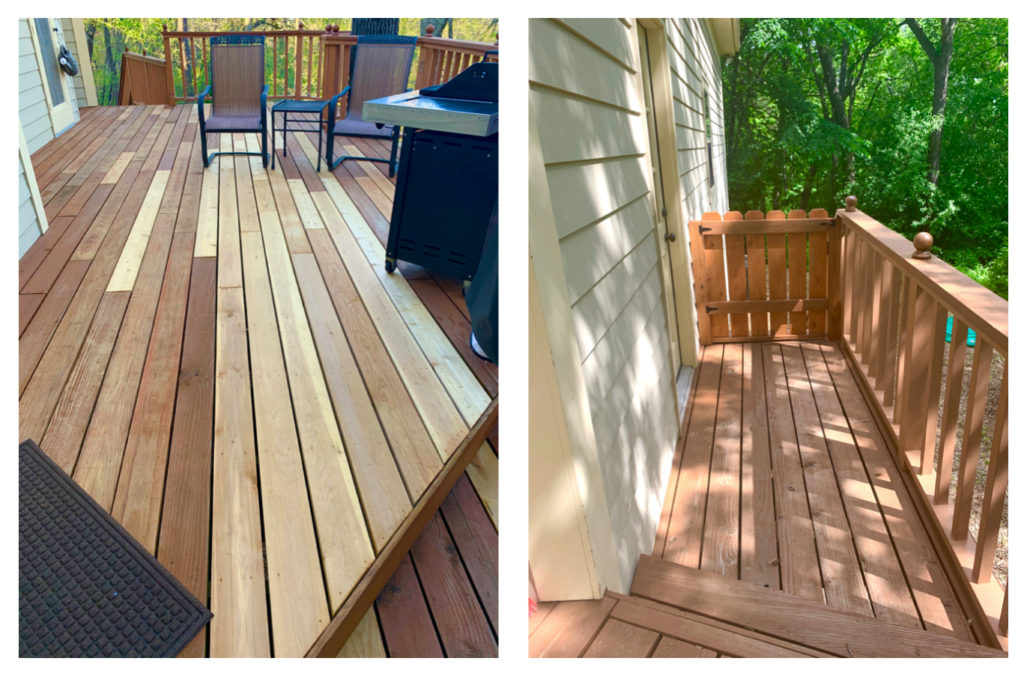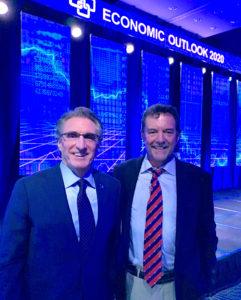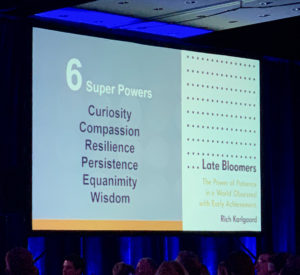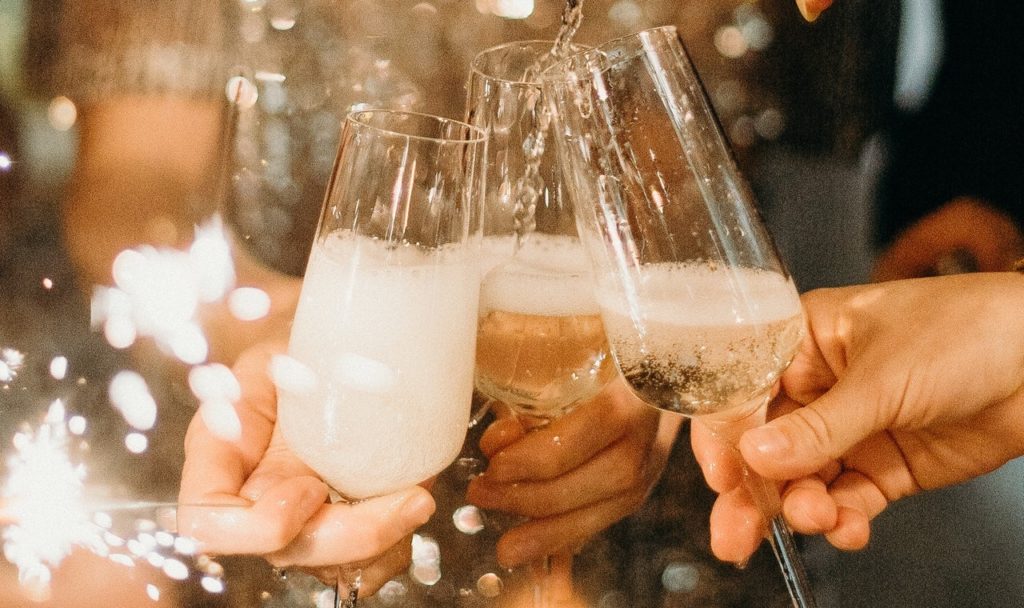
No word is uttered more often in startup circles, here or anywhere, than that dastardly F word. More ink is spilled and blather thrown around about it than virtually any other topic in the startup world. Who scored a round this week? Why is raising money so hard? When will we have more funding in our town (state, region)? Blah, blah, blah, and more blah. Multiple media outlets fall all over each other to breathlessly report on any successful VC raise (and even sometimes angel raises) as if it’s the equivalent of being drafted into pro ball or something. And I’m not just talking Minnesota — reporting on fundraising news and tracking the ongoing raises of startups is a veritable global industry unto itself.
Why is the topic so ever-present? Should we really be spending so much time talking and worrying about the process of attracting other people’s money? Or, as many founders might suggest, would you be better off to just shut up and bootstrap, focusing on attracting customers instead?
(Note: This article first appeared at Starting Up North, in two parts, both of which are included here.)
I wanted to probe the minds of a bunch of folks I know and admire here in my home state—founders and investors (many of whom also serve as mentors and advisors), plus some recently successful entrepreneurs— to get insights from their experience, and some useful advice.
What have they learned about raising money here in Minnesota? What works to get a startup going? What doesn’t? What’s realistic? What isn’t? Our objective was to try to help you better understand what really goes on out there behind the scenes, not just what you may hear, or read in various reports and stuffy press releases. And also to maybe break some stereotypes. [In my interviews, I asked the founders a similar set of questions, and of course, a different set of questions for the investors. The viewpoints of each didn’t always align exactly with their peers, but they were all quite forthcoming, for which I’m most grateful – and, hey, we all benefit, right?]
Think Before You Raise
One piece of advice that came up more than once about startup fundraising related to the question of why. “Make sure you really need it,” said Chip Pearson, cofounder of JAMF Software [which was acquired by Vista Equity Partners in late 2017 for… a large number] and now at Bootstrappers.MN. “There seems to be a missing component in people’s thinking regarding funding and business plans. If you don’t have a plan on how you can run your business without funding – albeit slower — then you should really spend the time on that problem and then raise money. The other thing is many people starting out see fundraising as a finish line and not a starting line. At best, fundraising is a distraction. At worst, it becomes the only thing that founders think about.”
This raises the question of, can you generate revenue? “Currently, Minnesota angels like to see traction in the form of revenue or meaningful market validation,” said Sara Russick, cofounder of Gopher Angels and a partner in the Capita3 fund. “They want to know the entrepreneur understands how to sell the product. This is a change from when we launched Gopher Angels in 2012. Then, angels were coming in earlier. Now, there are so many companies to look at, and a limited number of angel investors, so we’ve seen a shift in the stage where they want to come in. This is hard for early entrepreneurs because they need that really early, pre-seed capital. Gopher Angels does follow-on in about one-third of our companies, helping them get through that seed stage.”
One founder’s caveat: “A focus on revenue is the most important thing,” said Markus Mueller, cofounder of FashionBrain.ai, based in Duluth. “However, it’s important to focus on the right revenue — not all revenue is created equal. We coined the term ‘toxic revenue’ for that which is opportunistic and does not really grow the company to being profitable and sustainable. Revenue, yes — but only if it’s generated the right way and secures the future of the company.”
I asked another founder how she feels about focusing on customer revenue instead of raising outside investment. “It’s extremely important to pursue customer revenue right out of the gate,” said Mary Fallon, cofounder of Kidizen. “Outside investment is meant to accelerate the growth of a proven business model. No one will invest in you these days unless you have demonstrated that many customers will pay for your solution, however you define ‘payment’. It needs to be a repeatable interaction. In the ‘either/or’ scenario of this question, it comes down to how much of your business you’re willing to give up to accelerate that growth.”
Warning: Are You Ready?
Dave Russick, cofounder of Gopher Angels, offered this advice to founders: “One, do your own diligence on your future investors. Make sure you find ethical and non-predatory investors. Secondly, make sure you raise enough. Don’t low-ball your funding needs. Raising takes a lot of time. A founder does not want to have to seek funding every six months. What if you don’t achieve your optimistic projections? And, finally, have a funding strategy. Know what your funding needs may be through the next two or three rounds, and plan accordingly.”
I asked Chip Pearson if founders understand how long it realistically takes to raise a round of angel or VC funding? “Not at all,” he said. “It is a tremendous distraction with a number of levels to it – pitch, term sheet, closing. I was surprised how long it took even with two different, highly capable, experienced CFOs running the process.”
What Fundraising Options Are Founders Pursuing in Minnesota, and Why?
Raising money from Friends & Family. Several I spoke with had something to say about this option. “Many professional investors love to see a friends and family round prior to investing,” said Chip Pearson..” The logic is that founders may not care about losing institutional money, but they don’t want to face a Thanksgiving dinner where they lost their parents’ money.”
Another viewpoint was offered by Jeff Robbins, a partner at Avisen Legal, and founder/organizer of investor group Angel Pollination. “Doesn’t matter. Good investors evaluate an investment potential on the opportunity, the team, and the progress, regardless of how the founders move the ball.”
Several of the founders I talked to for this story raised money from friends and family as their first outside money, including Markus Mueller of FashionBrain; Mary Fallon of Kidizen; and Susan Langer, founder of LiveGiveSave. More from them later.
Seeking out Angel Investors. For most startups, significant funds first come from this source. It’s a big topic here in Minnesota, discussed daily in every corner of our startup community, because, quite simply, it’s how the vast majority of pre-seed and seed-stage startup funding has traditionally happened here in our state.
A favorite question is this one: just how risk-averse are Minnesota angels? Do they deserve the reputation? “For the most part, Minnesota angels are conservative,” said Gopher Angels’ Dave Russick. “There are a handful making bets, but most that do are investing in low dollar amounts to spread the risk.” Gopher Angels now has about 80 members and meets every other month, said Russick, and between 40 and 50 attend a typical meeting, depending on the time of the year. “We live stream and record each meeting. There are usually up to an additional 10 to 15 participating via the live stream or watching the recording after the pitch meeting.”
Dave’s wife, Sara Russick, cofounder of Gopher Angels, has this view: “First, if you’re investing in any startup at all, you’re not risk-averse. Minnesota angels value quality. They’re smart and experienced, and bring an analytical lens to how they invest. They’re not ‘heart and gut’ investors, not chasing the next shiny object. This also means that they’re committed to the success of the startups they invest in. They give lots of time and make meaningful intros—they’re really available to the entrepreneurs.”
What’s the perspective of some of the founders I surveyed for this story regarding angels, and their personal experiences?
Eric Martell, cofounder of a new startup called Pear Commerce, who’s working out of the Osborn 370 startup hub in downtown St. Paul, has had a variety of experiences with angel investors – in both Minnesota and Wisconsin. “My first startup, EatStreet [Madison WI], has raised $49M to date, $45M of which was raised while I was there,” he said. “Those raises spanned regional angels to midwestern VCs to nationwide funds to international funds. Admittedly, I was riding shotgun to my cofounder, Matt Howard, who is still CEO at EatStreet. Locally, I raised $1.5 million from angels to get Gener8tor Minnesota off the ground. This was a great learning experience for both raising local money and also running a micro VC fund. Most recently, Pear Commerce participated in the Brandery startup accelerator and received an investment as part of our participation. We haven’t announced our other funding yet, but watch for some news coming!”
Eric continued: “Here in Minnesota, I’ve raised from both local angels and regional VCs and think both work well. I’ve found angels to have a slightly lower risk tolerance than VCs — which might surprise some people. I have a theory about this: If you’re an angel, unless you’re very fortunate to have investable time and cash to build a true portfolio, you probably will err on the side of more caution because you can’t make the sheer quantity of investments a fund makes — time and cash! If you have three shots in a game of horse, you’re probably not taking any of them from half-court. A fund has a bit more of a luxury to place safer bets — more traction — and take a couple of those half-court shots because, if one goes in, you know you’re going to cover the whole fund. I think the best path to more early-stage fundings in Minnesota is for more funds to supplement the incredible activity of our local angel scene, which I really admire. We need a few more local VCs. But, much love to all the existing local VCs!” [Note: we’re not addressing traditional VC in this article, as we’re focusing on early-stage fundraising.]
Susan Langer, founder of fintech startup LiveGiveSave, based in Red Wing, also found her way to obtaining angel funding: “To date, we’ve raised just shy of $500,000 from family, friends, and a local angel group through two convertible notes. The first note did not mandate conversion to the equity round; the second did.” What worked best for her here in Minnesota? “The community! I was able to build on and network through existing relationships, as well as tap into the growing ecosystem in the Twin Cities metro and Southeast Minnesota. It was a labor of love, as I met with old and new friends to share my vision. Meeting Neela Mollgaard, former executive director of Red Wing Ignite, was a godsend. [Neela is now head of Launch Minnesota, an initiative of the Minnesota Department of Employment and Economic Development.] She connected me with valuable resources, all of whom offered, and continue to offer, measurable support — from mentoring and professional services, to pitch competitions and funding. Four years later, all have contributed to getting us where we are today – a working product in the App Store generating revenue.”
How did Kidizen get to angel funding and ultimately a VC round? “Like many startups, we began with seed money from family and friends and worked contract gigs to make ends meet,” said Mary Fallon, cofounder. “Concurrently, we pursued a few startup competitions, which helped subsidize our bootstrapping and helped us get our name out. Google for Entrepreneurs was one of the competitions that really propelled us down our path. In turn, that helped us raise our first round of convertible debt from angel investors. We followed up with a Series A round led by Origin Ventures in Chicago. We’ll be looking to raise our next round in 2020.”
Markus Mueller of FashionBrain: “Under our previous name (Tryon Media), we did a family and friends round, which obviously was after we had invested our own savings in the company. We then also raised angel funds — about $2 million from 2014 through 2016. Some investors also carry notes with the option to convert to equity.”
What has his experience been with angel investors in the Duluth area? “When I first convinced a few local angels to invest, they opened their networks to help me identify other potential investors. Several of our investors have invested more than once, and a few have more than tripled their initial investment.”
Alternatives: What About Bootstrapping?
I asked some founders how they scraped by early on. Is bootstrapping a viable option? How far can it take you? “We grew my previous company from $3000 pooled from the founders to mid-six-figure revenue per year while we were still students [at UW-Madison],” said Eric Martell of Pear Commerce. “I think timing and opportunity need to line up, and it’s totally possible. But my current company could never exclusively bootstrap to scale. It really depends on what you’re building that determines if that’s a viable path.”
Susan Langer of LiveGiveSave: “Before raising funds from family and friends, Red Wing Port Authority, Southern Minnesota Initiative Foundation, and a small amount from a newly-formed local angel group, my husband and I depleted our emergency and retirement savings. I obtained loans secured by our home and life insurance. In hindsight, I would not have done that with our home, as it created a significant barrier for us when we wanted to get a home equity loan to pay off personal debt.”
Markus Mueller of FashionBrain told me how he bootstrapped: “We started out in a floral-wallpaper adorned former master bedroom and moved out when we were five people, then moved to a 300 square foot office space in Duluth’s Canal Park. We still bootstrap on office space and are actively considering remote work for the entire team and company. We also bootstrapped in other ways. However, it’s wrong to think or assume that bootstrapping can help you avoid fundraising. We bootstrapped to be conscious of the use of funds — not to avoid having to raise funds.”
Mary Fallon, cofounder of Kidizen, which began in 2010, had some great insights: “If you’re choosing the bootstrapping path, you’re willing to take little or no salary while working more hours than you’ve ever worked before. It’s often not a choice but a decision you make based on the passion for your solution paired with a lack of independent wealth. It helps to have a strong support system made up of those who are most affected by this decision, which for me is my family. When Dori, my cofounder, and I started out, we were told that we weren’t your typical startup cofounders. ‘Typical’ meant you were young, male, and willing to sleep on peoples’ couches to circumvent rent or a mortgage. We had husbands and young children and were not in our twenties. We failed many times on our path to now. Bootstrapping is viable, yes – if you can produce strong revenue growth while keeping operating costs low. Then your chances of scaling without outside funds are better.”
Another amazing, more recent story about bootstrapping comes from Mary Kay Ziniewicz, founder of Bus Stop Mamas, which I wrote about here.
Two Different Funding Approaches – One Repeat Tech Entrepreneur
Daren Klum is a Minnesota tech entrepreneur who first cofounded LiquidCool Solutions (formerly known as Hardcore Computer) in 2006, based in Rochester, MN. More recently, he founded Secured2, Minneapolis, a data security company. What did he do differently in those experiences? “In both my startups, we initially followed a similar path. We raised capital from friends, family, and small funds. In the case of LiquidCool, we went the VC route for our Series A and B. At Secured2, we’ve bypassed the dilutive nature of VC. Instead, we’re doing alternative financing to scale the business, working with the largest sell-side M&A firm for software companies in the country.”
What has been his experience finding capital here in Minnesota? “We had tremendous support from friends and family in Minnesota for the early rounds in both my companies. However, the bulk of the $40 million we raised for LiquidCool came from out-of-state sources – in North Dakota, Wisconsin, and California. And most of the $6 million raised so far for Secured2 has also come from out-of-state — Virginia, Ohio, and Michigan. We’ve found larger capital amounts to be very hard to find in Minnesota.”
Klum said he bootstrapped both his companies in the early years. “Without showing a proof of concept and customers, we couldn’t ask anyone to invest. Was bootstrapping a viable option? Yes, I recommend all entrepreneurs bootstrap to minimize the risk for their investors,” he said. “Bootstrapping can replace a seed round if you do it while you have a job. I built my first company this way. I worked a full-time job and, at night in my free time, I would build my new business. Once I had enough built to justify investment, I was able to raise capital and quit my day job.”
How did Klum find and connect with angel investors? “I found all my angel investors through my network of friends, family, and colleagues. As well, I’ve been fortunate to get a couple investments from customers and relationships I built while growing the business.”
How long can a funding round take? “In the early stages, it can go very fast, because you’re generally working with people you know – friends, family, colleagues,” Klum said. “The more time-consuming capital raising comes when you get to your Series A and B rounds. The stakes are higher, there’s more due diligence, more risk, and obviously a lot more capital in play. So, generally, any round past your seed round logically takes more time to land. It can be months or even years to close larger funding amounts. It depends on the type of financing — debt, equity, or convertible.”
How Easy (or Hard) Is It Getting That First Check?
I asked Daren Klum what it was like taking that first investor check. “The first check is always the hardest – it’s usually family, and can be a very sobering experience. Once you take someone’s money, you’re committed and there’s no turning back. I see far too many first-time entrepreneurs take that first check, and then the going gets hard and they quit. Quitting is final. If you quit, you can’t reach success.”
Another viewpoint came from Markus Mueller, the founder of FashionBrain. “Getting the first check wasn’t hard at all — at least it didn’t feel that way. But there was a lot of effort that went into preparing the first pitch deck and engaging potential investors. Pre-work is key — by the entire team. They had my back, as the CEO and key fundraiser. Without their help, I would not have been able to do it. It does not get easier – in fact, I believe it gets harder. So, my advice is to focus and raise money as fast as possible with all effort on fundraising, and then return to driving the company’s business development. I made the mistake to raise funds over more than two years — and I regret the lack of focus the came with that. Know exactly how much money you need — raise exactly that. Don’t oversubscribe by more than 10%, for example. And use the funds to grow your company, to create value. Then, if necessary, raise more money at a higher valuation.”
How hard does Eric Martell of Pear Commerce say it is to get that first investor check? “I think this is a total case-by-case question. It was super hard to get early investors at EatStreet, then easier. I’ve seen companies exactly the opposite. You might have a very compelling vision or track record and get first checks easily, but then need to prove results. Likewise, if you’re a Minnesota tech company doing over $10 million in revenue, you’re flying in some rarified air and are likely to get a ton of love on a larger round.”
Rob Walling is the founder of TinySeed, a startup accelerator designed for bootstrappers. (Previously, he founded Drip, acquired by Minneapolis-based LeadPages, which adopted the Drip name.) I asked him if raising friends and family money is important before looking elsewhere. “Prior funding is less important than how much traction – for example, revenue – a startup has. I’d rather write a check to a founder who is capital efficient enough to make it to revenue without raising any funding.”
Should VC funding be so glorified? When is it the right way to go? “VC funding is simply one way to start a company,” said Rob. “It should not be viewed as a goal or having ‘made it.’ VC funding comes with a pretty major set of drawbacks, and founders should know what they are getting into before signing a deal.”
Can the Crowd Help?
A non-traditional option some have pursued here in Minnesota is crowdfunding. Since Kickstarter entered the national scene several years ago, many founders have tried it or its competitors. But, frankly, only a few startups in Minnesota have had great results. That may be changing. Wes Wierson, cofounder of Rochester startup LEAH Labs, is out to cure cancer in dogs. Here’s what he had to say: “Instead of Kickstarter, where you get a deal on a new tech gadget, the crowdfunding platform we chose—WeFunder—actually gets you equity in the companies you support. It’s been amazing for us. In addition to validating the market through testimonials of angel investors who know we’re building a cool product. and pet owners donating on behalf of their fallen furry friend, it brings much-needed seed investment to our business.”
Traditional VC did not fund Wes’ business early on, after he went through a recent biotech class in the famed Y Combinator accelerator program in Mountain View, California. “I think it’s because they really don’t understand our technical science, and, secondly, they’re more risk-averse than they want you to believe. With equity crowdfunding, we’re able to ignite our business based on the passion of dog owners, and the support of angel investors who understand the high reward market we’re building.”
What’s The Current State of the Minnesota Angel Community?
“When we founded Gopher Angels seven years ago, the angel community was limited to hard-to-find individuals or one angel fund,” said Dave Russick, cofounder. “Gopher Angels was able to provide a home for individuals and micros funds to collaborate on deals, which helped fill the funding gap for seed and early-stage companies. Frankly, there was still a greater need for funding than could be provided by GA. Over the last few years, the funding landscape has improved greatly. There are several new funds available to entrepreneurs, many of whom target specific industries. We also now have active accelerators such as Gener8tor and Techstars Farm to Fork that provide seed funding while helping the companies prepare better for the funding chase. There are also multiple individuals and organizations that are serving to connect founders and investors. We even have some funds such as Urban Innovation that have set up offices in the Twin Cities. In short, the angel investor scene here has changed tremendously and changed for the better!”
Joy Lindsay, partner, Sofia Fund: “I think the angel community in Minnesota is healthy and growing. I’ve been an angel investor for 20 years, and it’s probably the most active I’ve seen during that time. There are many new participants to the angel community. When we raised the original Sofia Fund, we purposely targeted women to join the fund who had never invested in the asset class before. These are people who are not only bringing their money but their expertise and network to engage with companies and help them grow.”
She continued: “Dave and Sara Russick have done an amazing job growing Gopher Angels. I was just at their meeting last week. Again, these angels are smart, engaged individuals from a variety of backgrounds and industries. Many have never invested before, but they join the group and learn from each other. The Minnesota Angel Tax Credit has also been a driver of bringing new people to angel investing. As we all know, investing in startups is very high risk, so anything that can be done to support that activity the better. Minnesota has a rich heritage of giving back. While that has historically meant we are very philanthropic, more and more I also see successful entrepreneurs and corporate executives giving their time and talent to invest in and then to mentor entrepreneurs. Like philanthropy, this work is critically important to the economic growth of the state.”
How does startup attorney Jeff Robbins, who also heads the Angel Pollination investor group, assess the current state of the Minnesota angel community? “I’d say better educated on investing and increasingly not doing so. I would add some color to that – our prime angel community is aging out. They’re moving to warmer climates and investing in funds rather than companies. And the recession has delayed the emergence of next-gen angel investors.”
Is that a clarion call to younger angels out there – time to step up?
Sara Russick of Capita3 (and also a cofounder of Gopher Angels) assesses the current situation thusly: “There are so many awesome entrepreneurs who are working so hard. Many more of them deserve funding than are actually getting it. A small number of angel investors can’t fund them all – it’s that simple. We have tons of resources to help grow the startup community. We need more resources pointed at growing the angel investor community.”
Mary Grove, Minnesota-based partner in Revolution’s Rise of the Rest Fund, sees things in a similar vein: “Minnesota’s startup ecosystem has scaled impressively over the last half-decade. It’s an attractive place to start and scale a company. From the density of Fortune 500s to the talent pool to the capital efficiency of building here. That said, there is still a large gap at the early stage in the funding landscape, especially at the Seed and Series A stage across most sectors.”
What Does the Future Hold for Startups Trying to Raise Capital in Minnesota?
Rob Walling of TinySeed says things look good: “The more Minnesota startups that have success, the more our ecosystem grows. I’ve been in town for three years, and, even during that short time period, I have noticed more events, more startups, and generally more action in our local startup ecosystem.”
Sofia Fund’s Joy Lindsay also likes what she’s seeing. “Raising money for a startup is never easy. But I think there are a few trends in Minnesota that are making it easier. Most of the very early capital invested in startups comes from investors in the general geographic region. We do have an active and growing angel community. But what is also encouraging to me is the growth of new venture funds. In recent years, Capita3, Matchstick Ventures, Great North Labs, The Syndicate Fund, and even funds like the student-run Atland Ventures have all closed new funds to invest in seed and early-stage rounds. These funds didn’t exist five years ago and are actively investing in companies, many of which are based in our state. Then there are funds like Vensana Capital, led by seasoned VC Kirk Nielsen, who recently closed a $225-million fund. Obviously, that capital won’t all go to Minnesota companies, but it’s great to have Kirk based here. We could use more of these large Series A and Series B venture capital funds in our state, but it’s encouraging to see so many new funds starting.”
Joy continued: “One area that excites me is the focus on getting all members of our community interested in entrepreneurship and investing. The Sofia Fund was one of the very first groups to focus on growing the number of women angels, and then investing in women-led companies. Capta3, another local fund, focuses on women-led companies in healthcare. Lunar Startups is a local incubator doing great work to support women, people of color, and other high-potential entrepreneurs. The Aspen Institute, the Center for Economic Inclusion, and the Case Foundation recently held a summit to discuss ‘inclusive investing’. Here in Minnesota, MEDA has provided capital to minority entrepreneurs through its $1 Million Challenge.”
Does attorney Jeff Robbins see things improving? And how do we compare to other states? “Improving over the 2008 recession days? Yes. Minnesota fares well among Midwestern states, and we do have cool companies.”
“The future is bright,’ said Sara Russick. “We’re turning a corner and growing from a nascent entrepreneur ecosystem to one that is being supported from all sides, taking advantage of Minnesota’s awesome people, education, big corporations, and communities. Our state is attracting attention from investors from around the country because they see what’s happening here. As more of our startups begin to mature, we could see the Series A/B gap grow. I hope we see many more Series A and B funds come in to support their growth, and keep our innovation and talent here in Minnesota.”
Mary Grove of the Rise of the Rest Fund provided this perspective: “The good news is, more investors are paying attention and seeking opportunities to establish a local presence here or simply seek out local startups to fund. I believe we’ll continue to see expanded access to capital and the opportunity for more innovative companies to start, and equally importantly, to scale and stay here. Our recent Twin Cities Startup Week was a great example of this trend. I connected with investors and startups alike who had flown in from other cities in the region as well as the coasts to participate. At Revolution’s Rise of the Rest Seed Fund, we’ve invested in six Twin Cities-based companies. I’m proud to be based here and part of the Minnesota entrepreneurial community.”
[Note: The second Rise of the Rest Seed Fund was announced October 28 – another $150 million fund focused on backing entrepreneurs outside traditional coastal hubs.]












Recent Comments